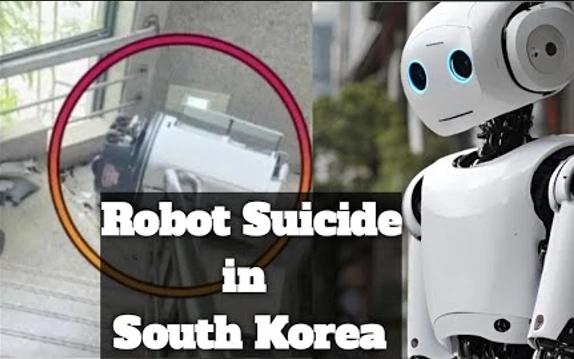Robots can't commit suicide; it was malfunction--Scientific Analysis

Stay tuned with 24 News HD Android App

A robot recently fell down a flight of stairs in South Korea, leading to its breakdown and subsequent malfunction.
This incident, which some may mistakenly refer to as "robot suicide," is more accurately described as a malfunction.
While some might sensationalise this incident as "robot suicide," it's important to understand the technical aspects behind such malfunctions.
Robots do not have emotions or wills; they are complex machines that rely on precise data and algorithms to function correctly.
Malfunctions like this one provide valuable insights that drive continuous improvement in robot design and functionality.
Here's a detailed breakdown of what happened and why robots cannot commit suicide.
What Happened?
On June 26, South Korea's Gumi City Council reported the 'death' of its premier administrative robot officer.
The robot, which had been serving as a city council officer, was discovered at the bottom of a six-and-a-half-foot flight of stairs.
Rumours circulated that the robot had committed suicide, leading to significant trolling on social media across the world.
Actually, the robot experienced a malfunction which is a technical term meaning that it made an error in its calculations. And this error caused the robot to misstep, lose balance, and ultimately fall down the stairs.
Understanding Robot Movements
Robots do not have a will or consciousness. They operate on computers that use algorithms to calculate their movements.
These algorithms rely on data from various sensors to make decisions about the robot's next steps.
If one of these sensors malfunctions and sends incorrect data to the robot's computer, the robot's algorithm may produce incorrect responses.
Signs of Malfunction
Prior to the fall, there were clear signs that the robot was malfunctioning.
It was observed spinning in circles for no apparent reason, indicating that at least one of its sensors was providing faulty data.
This incorrect data likely led to the miscalculations that caused the fall.
Current State of AI
As of now and in the foreseeable future, it is highly unlikely that robots or artificial intelligence (AI) will be able to genuinely think, feel, or experience emotions like humans do.
Here are some key points to consider:
Task-Specific Intelligence:
AI today is designed for specific tasks and operates based on algorithms and predefined rules.
Examples include language processing, image recognition, and playing games.
Lack of Consciousness:
AI lacks self-awareness, consciousness, and subjective experiences.
AI systems do not have an inner life or personal experiences; they process data and perform computations.
Theoretical Considerations
Complexity of Human Emotions:
Human emotions are deeply intertwined with our biology, involving complex interactions between the brain, hormones, and the nervous system.
Replicating this intricate system in a machine is far beyond current technological capabilities.
Ethical and Philosophical Issues:
The concept of machines having emotions raises significant ethical and philosophical questions.
Debates around AI rights, responsibilities, and the implications of creating machines with human-like qualities are ongoing.
Future Possibilities
Simulating Emotions:
Advanced AI may simulate emotions to better interact with humans.
These simulations would be based on patterns and responses programmed by humans, not genuine emotional experiences.
Artificial General Intelligence (AGI):
AGI refers to a machine with the ability to understand, learn, and apply intelligence across a wide range of tasks, similar to a human.
Achieving AGI is a significant challenge and remains a theoretical goal, with no clear path to realisation.
Improving Robot Design:
Engineers use every failure as a learning opportunity. By studying this incident, they can identify potential design flaws and make necessary improvements to both the hardware and software of their robots.
This iterative process is essential for advancing robot technology and ensuring its future reliability.
Conclusion
While AI and robotics are advancing rapidly, the creation of robots that genuinely think, feel, or experience emotions like humans is not currently within our reach. AI can simulate certain aspects of human behaviour, but true consciousness and emotional experiences are unique to living beings and are not replicable by machines with current or near-future technology.
So, in the matter of ‘Robot Suicide’, it is crucial to dispel any rumours or sensationalist claims, as robots do not possess emotions, consciousness, or free will. They are complex machines that function based on algorithms and sensor data. The incident in question was the result of a technical malfunction, not an act of self-destruction. By understanding the nature of robotic operations and malfunctions, we can appreciate the complexities involved and focus on improving their design and functionality rather than attributing human-like behaviours to machines.
